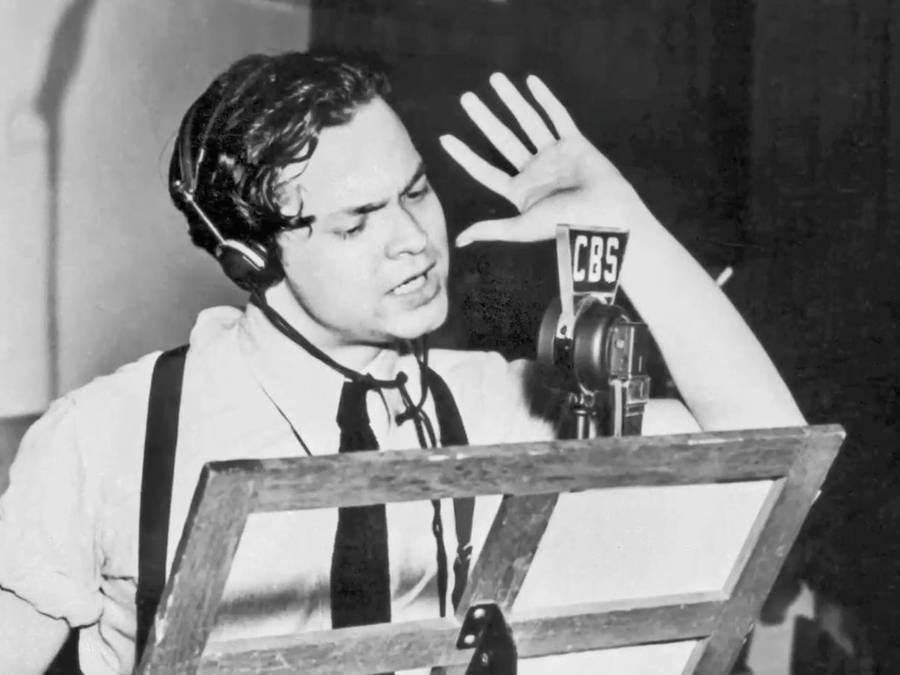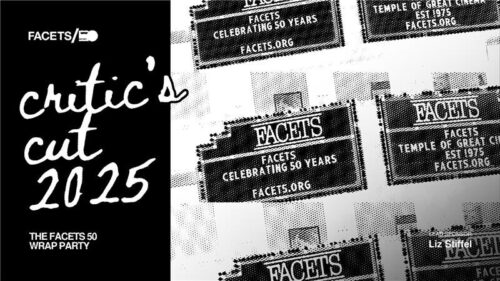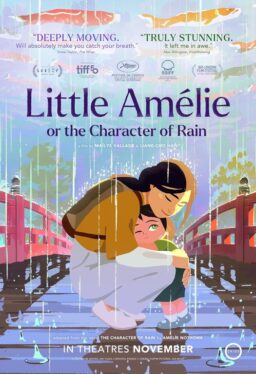Thumbnails is a roundup of brief excerpts to introduce you to articles from other websites that we found interesting and exciting. We provide links to the original sources for you to read in their entirety. This special edition of Thumbnails commemorates the 80th anniversary of Orson Welles‘ War of the Worlds broadcast on October 30th, 2018. Special thanks our Editor-at-Large, Matt Zoller Seitz, for the idea.—Chaz Ebert
1.
“The Fake News of Orson Welles: ‘The War of the Worlds’ at 80“: Peter Tonguette of Humanities Magazine chats with filmmaker John Landis and Welles scholar Marguerite Rippy about the historic broadcast.
“It’s easy to imagine why Welles might have been tickled pink at the public’s purported panic over The War of the Worlds, which celebrates its eightieth anniversary this month. While retaining the basics of Wells’s original tale, Welles and scenarist Howard Koch tinkered with its setting: What had been 1890s-era England became 1930s-era New Jersey. Even more devilish—and, frankly, potentially confounding to the public—was the choice not to dramatize the story but to dish out its details newscast-style. In a cast full of talented voices, Frank Readick played a reporter from the made-up Intercontinental Radio News and Welles was a university professor attempting to reckon with the news of the interstellar invaders. ‘We made a special effort to make our show as realistic as possible,’ Welles said in an episode of the 1955 BBC television series Orson Welles’ Sketch Book. ‘That is, we reproduced all the radio effects, not only sound effects. Well, we did on the show exactly what would have happened if the world had been invaded. We had a little music playing and then an announcer coming on and saying, ‘Excuse me, we interrupt this program to bring you an announcement from Jersey City. . . .’’ In fact, Welles was accustomed to courting a kind of danger in his productions. About a year before The War of the Worlds, the Mercury Theatre had put on Shakespeare’s Julius Caesar, which was marred when Welles, seeking a particular lighting effect, demanded the use of a real dagger, rather than a fake, when he, as Brutus, stabbed Caesar (played by Joseph Holland). During one performance, Welles managed to wound Holland, an incident recounted by Mercury actor Norman Lloyd in my book Orson Welles Remembered. ‘These things happened with Orson,’ Lloyd told me. ‘I never checked again, or even thought about checking, whether Orson kept using a real dagger. But I know that was the end of the dagger with Joe Holland!’”
2.

“Us and Them: Leo Goldsmith on ‘War of the Worlds’“: An excellent essay published in a 2012 issue of Reverse Shot.
“Precisely what fears these sinewy tripods are intended to represent—or, indeed, whose way of life is being threatened—remains ambiguous, even as it seems clear that Spielberg wants us to think something important about our lives during wartime. For H. G. Wells, however, there was no such ambiguity. An avowed socialist and advocate of ethnic and regional self-determinism, Wells deployed his novel at the twilight of a long and bloody century of British imperial expansion. Wells’s novel supplies a grim, detailed account of occupation at a time when the British Empire was engaged in violent insurgency management around the globe (especially in Africa, where resistance raged from Egypt to South Africa, and a half-dozen places in between). Wells’s unnamed narrator, who’s rather more reflective than Ray, frequently ponders what he calls a sense of humanity’s ‘dethronement,’ ‘a persuasion that I was no longer a master, but an animal among the animals, under the Martian heel. With us it would be as with them, to lurk and watch, to run and hide; the fear and empire of man had passed away.’ Wells’s story has a Darwinist bent that is social as well as natural—humanity’s complacent masses find themselves crushed and enslaved, reduced to livestock by the alien occupiers, and the microbes that ultimately prove the most effective weapons against this occupation suggest an inevitable, if unexpected insurgency at the smallest level.”
3.

“‘Special Bulletin’: Transfictional Disavowal“: Jump Cut‘s Tijani El-Miskin analyzes Edward Zwick‘s 1983 TV movie, currently available on YouTube.
“Many of War of the Worlds‘ approximately 12 million listeners (a figure based on the 1930 census, American Institute of Public Opinion survey six weeks after the broadcast, and Hadley Cantril’s research) who heard the Sunday night (8:00 p.m. Eastern Time) Orson Welles’ broadcast knew that it was Welles speaking. If some did not, they were told at the beginning of the broadcast by the announcer, but they had to have tuned in on time: ‘The Columbia Broadcasting System and its affiliated stations present Orson Welles and the Mercury Theatre on the air in War of the Worlds by H.G. Wells.’ The announcer added further ‘Ladies and gentlemen: the director of the Mercury Theatre and star of these broadcasts, Orson Welles…’ All the signs of fictional formalities were observed by the announcer, such as mentioning the name of Orson Welles, clearly not a newscaster, and appealing to a famous science fiction writer, H.G. Wells’ name, evoking the name of the Mercury Theatre, and mentioning fiction-related words like ‘star,’ words not associated with news bulletins. This bracketing of fictional conventions did not lull the audience into a sense of fantasy. Not even the four spoken reminders from the beginning of the broadcast to the end achieved that purpose. The operation of transfictional disavowal should force them to demand a separation of fact and fiction. Of course, not every listener would be frightened into believing the invasion was real. Some may have known the fictional story. Others may have had other dispositions. But the impact of manipulating the resources of one convention so as to mingle it with other conventions had a concrete effect. Needless to say, the director Edward Zwick was fully aware of Orson Welles’ War of the Worlds (see Los Angeles Times, January 31, 1983). Indeed even the name ‘SPECIAL BULLETIN’ appears to have been taken from Wells’ 1938 broadcast’s manipulation of ‘factual’ radio conventions. Very early in the beginning of Wells’ broadcast, the announcer, as part of the fictional ‘drama,’ informed the listeners that the station would ‘bring you the music of Ramon Raquelo and his orchestra.’”
4.

“‘The War of the Worlds’ review in The New York Times“: Byron Haskin’s 1953 screen version received a solid recommendation in the respected paper.
“There’s no point in smugly rusticating behind the protection of the hydrogen bomb and jet planes. Those Martians, first reported in 1898 by H. G. Wells and terrifyingly revived for radio listeners by Orson Welles some forty years later, descended, with an assist from Paramount, on the Mayfair yesterday via ‘The War of the Worlds.’ Now it’s either a mad dash for the hills or to the theatre. And, after calm deliberation, it would appear that the movies is the better bet. Make no mistake about it, science-fiction, like comic books, is a part of our culture, and George Pal, who produced this latest amalgam of fact and fantasy, is no tyro in this field. Like his previous sorties into interplanetary space—‘Destination Moon’ and ‘When Worlds Collide’—‘The War of the Worlds’ is, for all of its improbabilities, an imaginatively conceived, professionally turned adventure, which makes excellent use of Technicolor, special effects by a crew of experts and impressively drawn backgrounds. Equally important is the fact that Director Byron Haskin, working from a tight script by Barre Lyndon, has made this excursion suspenseful, fast and, on occasion, properly chilling.”
5.

“‘War of the Worlds’ review by Roger Ebert“: The critic was less than enthused by Steven Spielberg’s 2005 version of Wells’ classic. At his Scanners blog, Jim Emerson examined the film’s Scientology-related subtext.
“The problem may be with the alien invasion itself. It is not very interesting. We learn that countless years ago, invaders presumably but not necessarily from Mars buried huge machines all over the Earth. Now they activate them with lightning bolts, each one containing an alien (in what form, it is hard to say). With the aliens at the controls, these machines crash up out of the Earth, stand on three towering but spindly legs and begin to zap the planet with death rays. Later, their tentacles suck our blood and fill steel baskets with our writhing bodies. To what purpose? Why zap what you later want to harvest? Why harvest humans? And, for that matter, why balance these towering machines on ill-designed supports? If evolution has taught us anything, it is that limbs of living things, from men to dinosaurs to spiders to centipedes, tend to come in numbers divisible by two. Three legs are inherently not stable, as the movie demonstrates when one leg of a giant tripod is damaged, and it falls helplessly to the ground. The tripods are indeed faithful to the original illustrations for H.G. Wells’ novel The War of the Worlds, and to the machines described in the historic 1938 Orson Welles radio broadcast. But the book and radio program depended on our imaginations to make them believable, and the movie came at a time of lower expectations in special effects. You look at Spielberg’s machines and you don’t get much worked up, because you’re seeing not alien menace but clumsy retro design. Perhaps it would have been a good idea to set the movie in 1898, at the time of Wells’ novel, when the tripods represented a state-of-the-art alien invasion.”
Image of the Day

Medium‘s Grovers Mill Podcast illuminates “a few things you may have missed about” about Welles’ “War of the Worlds” radio landmark.
Video of the Day
The complete hour-long broadcast of Orson Welles’ brilliant “War of the Worlds” adaptation for radio.











